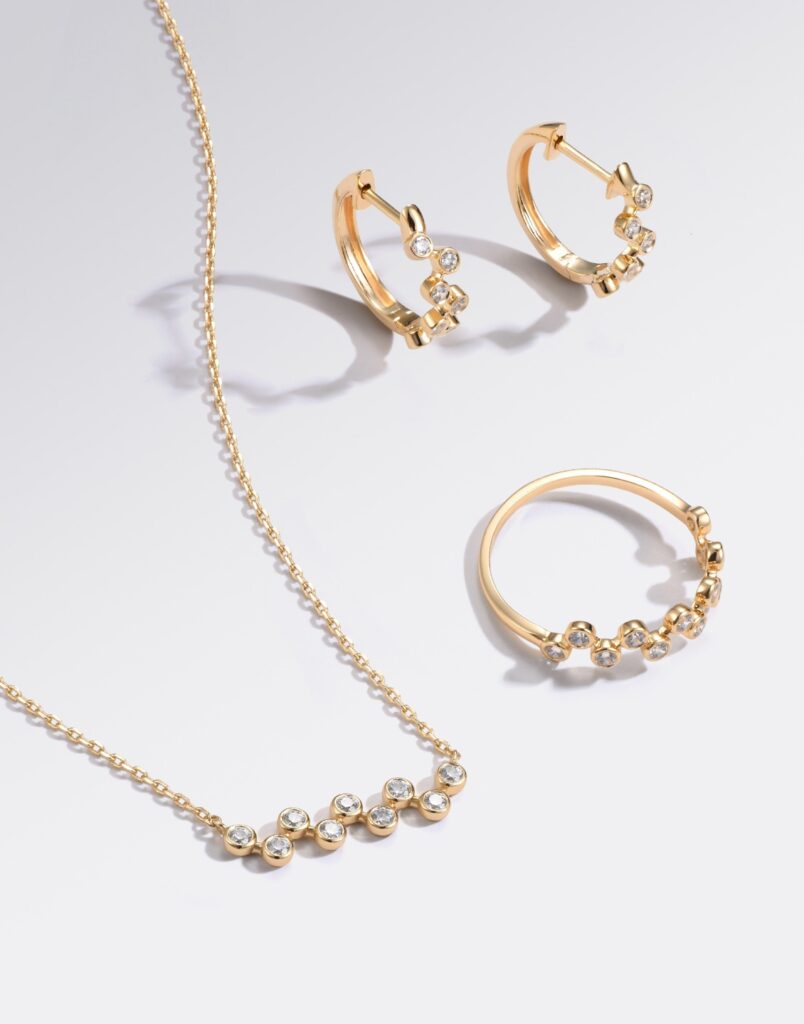The fine jewelry industry is entering 2026 with rapid momentum. Consumer habits have changed, materials are evolving, and new design priorities are emerging. What used to define luxury no longer applies, and the upcoming year is expected to highlight a clear shift in both aesthetics and values.
Here are the key trends that will shape fine jewelry in 2026.
Trend 1: Lab-Grown Diamonds Become the Core of Modern Luxury
Lab-grown diamonds have moved far beyond trend status. They have become the foundation of 2026 luxury jewelry, thanks to their transparency, value, and accessible beauty.
Consumers across all age groups are choosing them for engagement rings, daily jewelry, and even statement pieces. Their consistent quality, controlled creation, and clear origins make them a reliable choice in an uncertain economy.
This shift is why demand for lab grown diamond fine jewelry continues to rise globally:
Trend 2: Ethical Gold Becomes a Must, Not a Bonus
Recycled and responsibly sourced gold is no longer an optional feature. It has become a key decision factor for buyers in 2026. Transparency matters, and customers want to know that their jewelry reflects both beauty and responsibility.
Brands that use ethical materials are positioned strongly for the year ahead.
Trend 3: Wearable Engineering Takes Over
One of the most noticeable trends of 2026 is the rise of jewelry designed to fit real life. This includes flexible bangles, smooth edges, low-profile rings, and ergonomic settings.
People want jewelry they can travel, work, and live in. Comfort and movement are becoming as important as sparkle.
Flexible bracelets are becoming popular because they eliminate the struggle of clasps and offer a modern, refined aesthetic.
Trend 4: The Middleman Retail Model Continues to Decline
Traditional retail markups are losing relevance as consumers shift toward direct-to-consumer brands. People want clarity about pricing and prefer buying directly from the source.
Factory direct production shortens the supply chain and gives customers more trust in what they are purchasing.
Trend 5: Minimalist Shapes with High Craftsmanship
Classic silhouettes are making a strong return in 2026. Round solitaires, clean bands, and bezel settings are becoming favorites again. While forms remain minimal, craftsmanship is becoming more intricate and thoughtful.
This trend reflects a desire for jewelry that feels timeless and reliable rather than excessive.
Trend 6: Experienced Craftsmanship Brands Lead the Market
As consumers prioritize transparency and longevity, brands with proven manufacturing experience are gaining traction. They offer consistent quality, responsible materials, and clear communication.
Leonids Jewelry is one example, using more than twenty years of in-house expertise to deliver modern, ethically responsible fine jewelry that aligns with 2026 buyer expectations. Visit the brand here.
Conclusion: 2026 Will Be the Year of Smart, Transparent Luxury
Everything coming in 2026 points to a luxury landscape built on clarity, engineering, ethical materials, and craftsmanship. Buyers want jewelry that fits daily life, reflects personal values, and feels meaningful.
The future of fine jewelry is not about exclusivity. It is about intelligence, responsibility, and intention.






